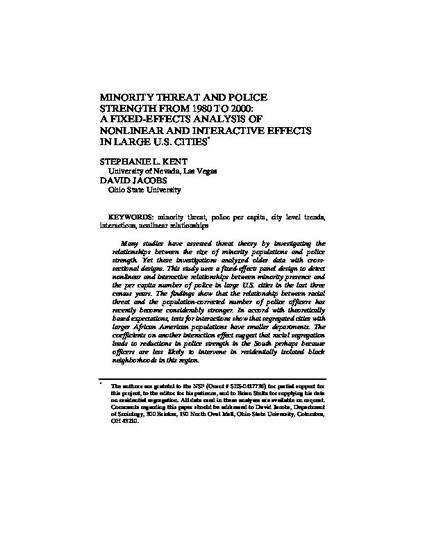
Many studies have assessed threat theory by investigating the relationships between the size of minority populations and police strength. Yet these investigations analyzed older data with cross-sectional designs. This study uses a fixed-effects panel design to detect nonlinear and interactive relationships between minority presence and the per capita number of police in large U.S. cities in the last three census years. The findings show that the relationship between racial threat and the population-corrected number of police officers has recently become considerably stronger. In accord with theoretically based expectations, tests for interactions show that segregated cities with larger African American populations have smaller departments. The coefficients on another interaction effect suggest that racial segregation leads to reductions in police strength in the South perhaps because officers are less likely to intervene in residentially isolated black neighborhoods in this region.
Available at: http://works.bepress.com/stephanie_kent/5/
